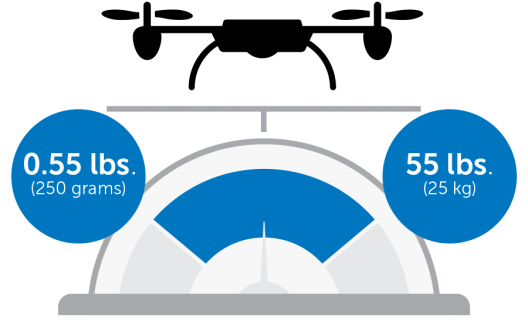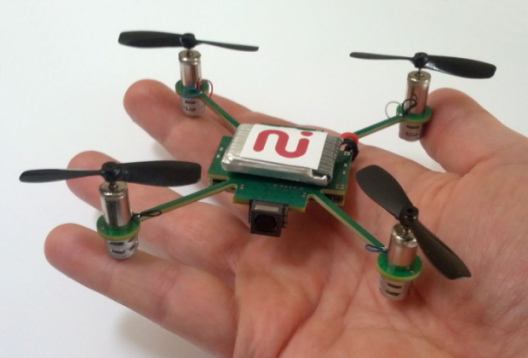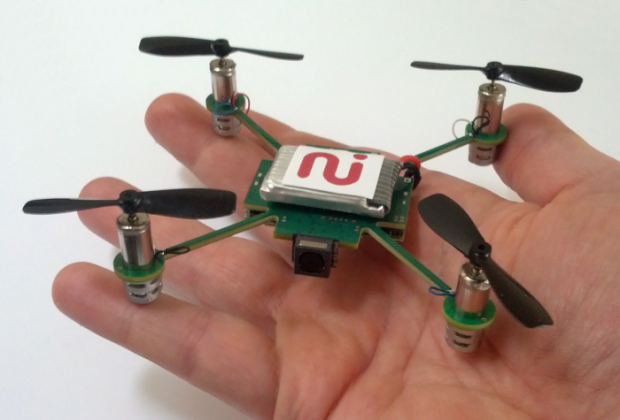At some point in the not-too-distant future, all those Christmas-gift quadrotors and Star Wars replica drones will be joined by medium-size burger bombers and two-hour-guaranteed delivery aerial vehicles for fast food restaurants and on-line retailers sending their wares to a landing zone near your front door, or perhaps the roof of your apartment. This probably isn’t what Alfred Lord Tennyson had in mind when he wrote:
” For I dipt into the future, far as human eye could see,
“Saw the heavens fill with commerce, argosies of magic sails,
There are already rules governing drone flight, but no tests for competence of pilots, who will be often untrained, unaware, or uncaring. For larger drones and commercial flights, we can probably expect stringent rules, but for the growing number of amateurs unaware of the basic rules of flight, there might be a need for authorities to step in and restrict flight for even responsible users. Unfortunately that seems to be the way it works in many realms.

Lowest weight that needs to be registered to highest weight permissible for non-commercial use
To prevent becoming a killjoy, the Federal Aviation Administration (FAA) is taking cues from several incidences of unpleasantness and requiring everyone who has a “drone” that weighs over 0.55 pounds and under 55 pounds to register the machine and pay a nominal $5.00 fee. This one-time fee is good for three years and applies to any unpiloted aerial system (UAS) the owner possesses.
Fliers must register any time after December 21 (just in time for Christmas) and by February 19, 2016 – giving enough time to get over the newness of their holiday gift or purchase. There will be civil and criminal penalties for not registering your UAS with the USA.
Owners must be 13 years of age or older. Owners less than 13 must have an older friend or relative register the vehicle. Owners must be a U. S. citizen or legal permanent resident.
Owners must register their UAS online if it meets the following guidelines:
- Weighs more than 0.55 lbs. (250 g) and less than 55 lbs. (25 kg). Unmanned Aircraft weighing more than 55 lbs. cannot use this registration process and must register using the Aircraft Registry process.

This type of small quadrotor, which may never leave the boundaries of a back yard, does not need to be registered.
The FAA provides a handy guide to UAS’s required to be registered and those that do not. One can wish the IRS would provide a similar illustrated guide. See examples of UAS that do and do not require registration (PDF).
If owners have a UAS over 55 pounds, used for commercial purposes, or other than hobby and recreation jollies, they cannot use the easy on-line form, but must show their pen and paper skills with a paper form. The FAA requires this same form if owners intend to use their UAS outside the country. Undoubtedly authorities at any foreign destination will have additional forms and additional rules.
Owners will need an email address, a credit or debit card and physical and mailing address to register their new toy. It costs a mere $5 for a three-year registration and comes with a number the owner must mark on all the unmanned units in their possession. As an incentive to register, applications received by the FAA before midnight, Eastern Standard Time, January 20, 2016 get a refund on the application fee.
We can all assume that getting caught flying a quadrotor or other unregistered device after that date prompts the dreaded fees and penalties so beloved by bureaucrats.
Larger machines may be used soon for package delivery, including fast food. A pizza in a jet intake might not be the best reason to have to file an incident or accident report, though.
To see why the Feds might be taking this more seriously than people who might disregard these rules, watch as a champion skier survives a near miss by a plummeting camera drone. Your editor knows just enough French to understand the “encroyable!” (incredible!) uttered repeatedly by the sportscaster.
This longer video shows a drone in another country exceeding the 400-foot altitude limit enforced here, getting away from its pilot, and finally losing power and falling out of the sky. Luckily, the thing lands in an uninhabited part of a larger development. It also proves how incredibly sturdy GoPro cameras are, although this pilot will probably not achieve GoPro Hero status.
The problems will proliferate as Sustainable Aviation is able to launch Sky Taxis that will have to effectively and safely share airspace with all the smaller package-bearing UAS’s. How to maintain sequencing and separation will require some sharp programming at NASA and the FAA. That lower 400 feet will require policies that enable safe delivery of packages and pizzas while avoiding trespassing on pocket airparks and larger commercial operations.
Late-breaking news comes that 45,000 UAS’s have been registered since December 21, with thousands more anticipated as recipients open their gifts tonight and tomorrow morning.

